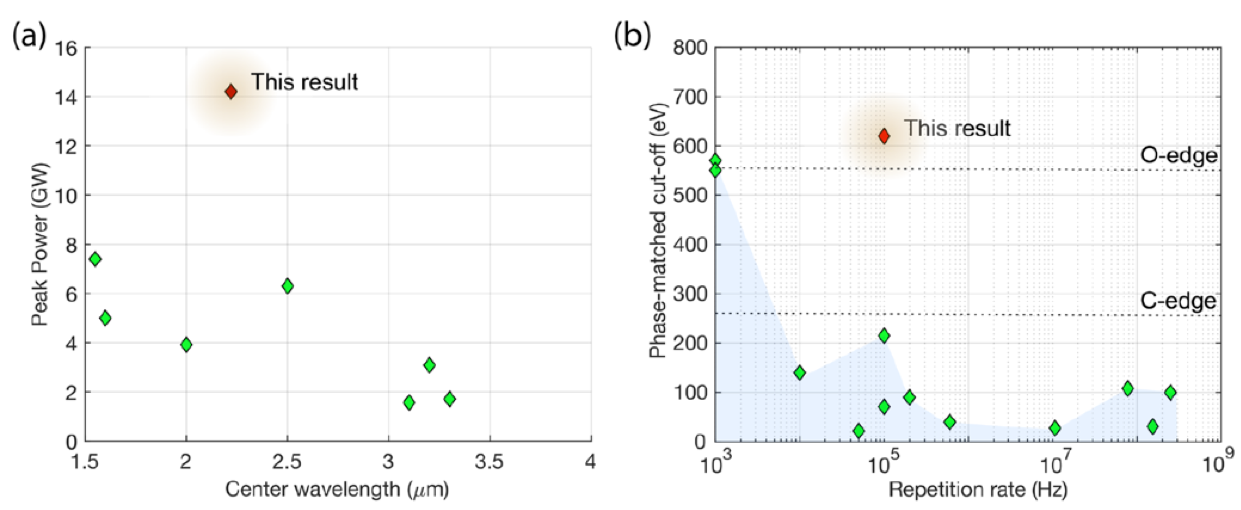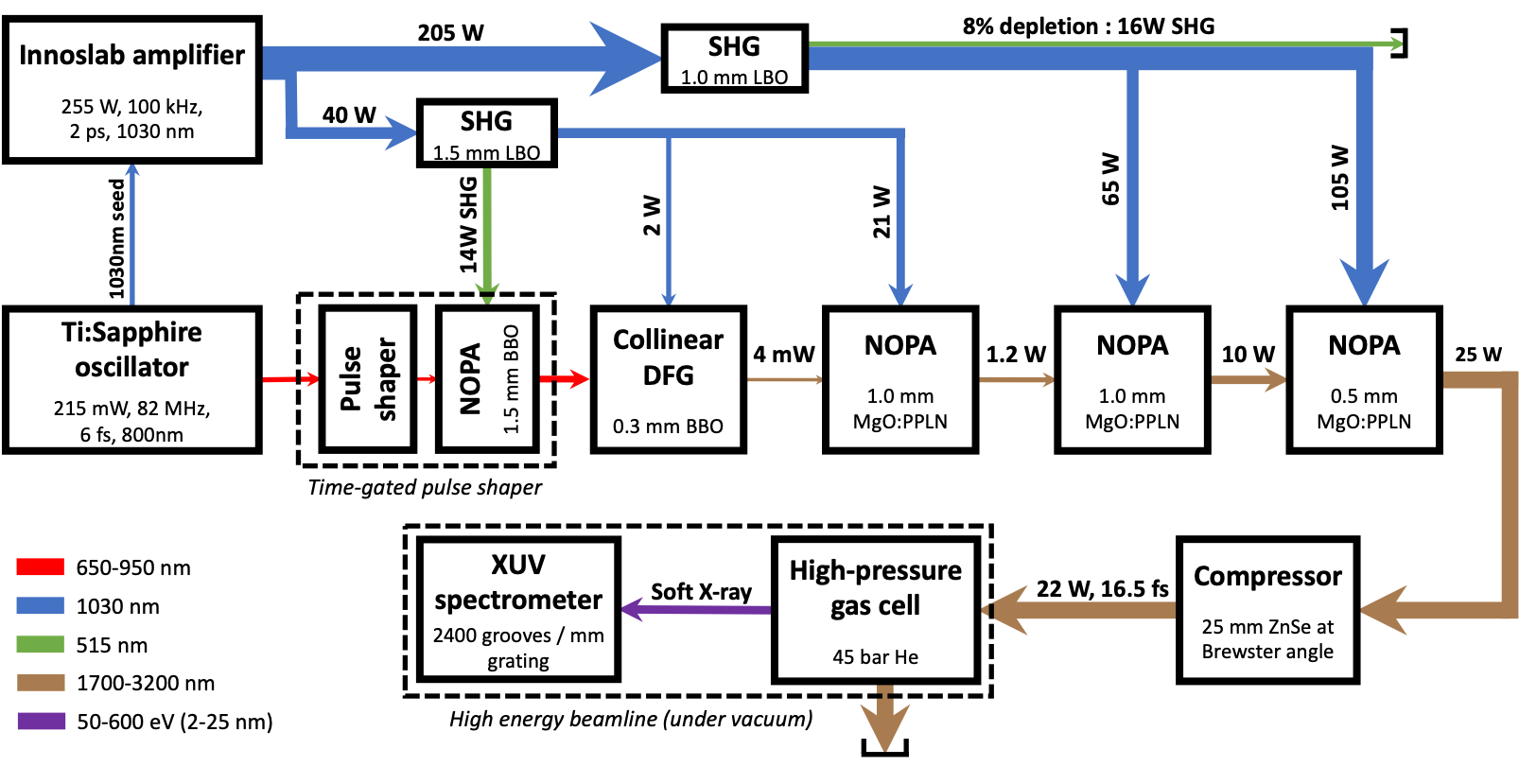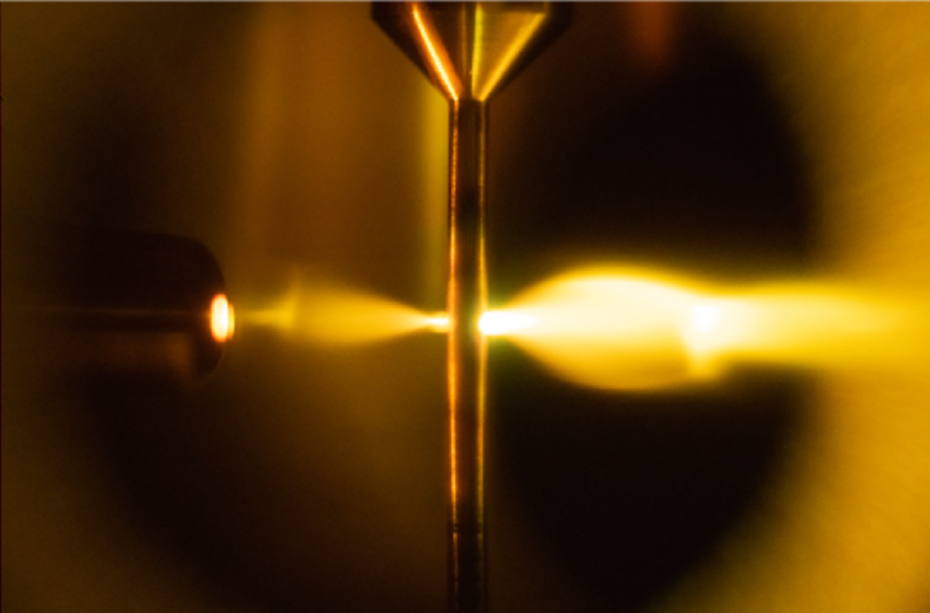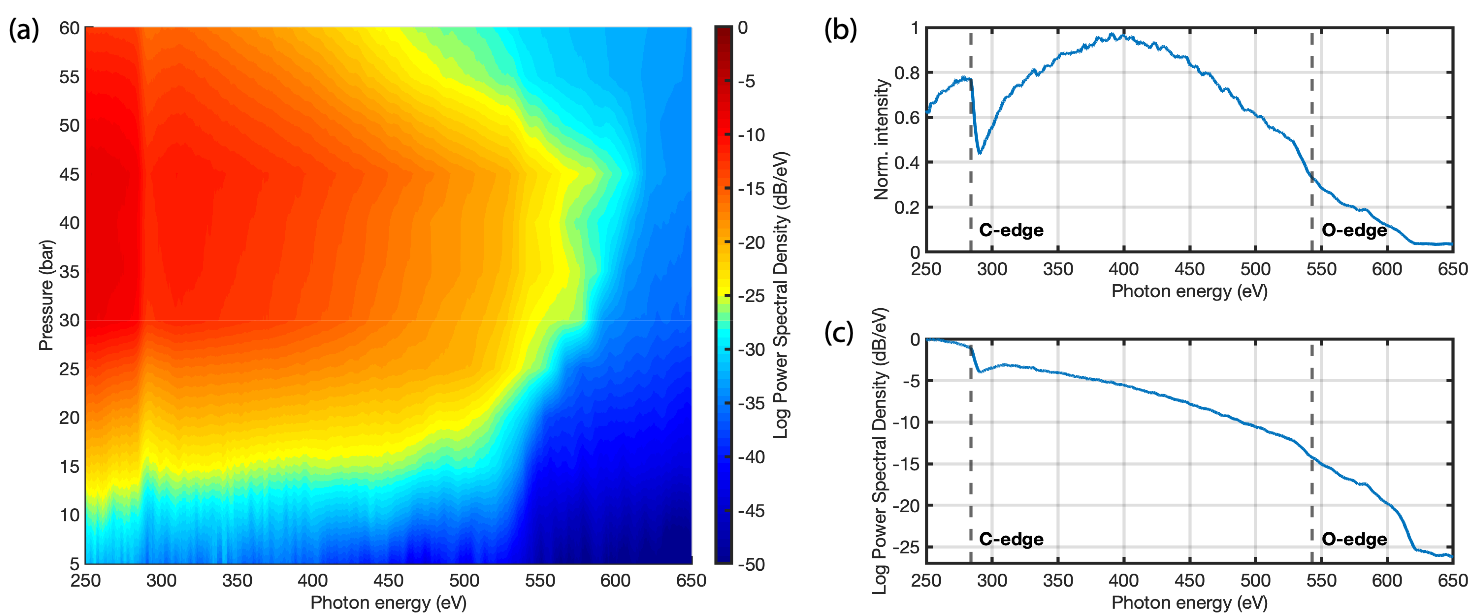High-harmonic generation in the water window with a high-average power mid-infrared OPCPA at 100 kHz
We present an OPCPA with 25 W average power, generating 16.5 fs pulses with 14 GW peak power at 2.2 μm with 100 kHz repetition rate. This source enabled high-harmonic generation extending beyond 0.6 keV.
[466] J. Pupeikis, P.-A. Chevreuil, N. Bigler, L. Gallmann, C. R. Phillips, U. Keller
Download "Water window soft x-ray source enabled by 25 W few-cycle 2.2 µm OPCPA at 100 kHz" (PDF, 1.8 MB)
Optica, vol. 7, No. 2, pp. 168-171, 2020
doi: external page 10.1364/OPTICA.379846
ETH News: X-ray vision through the water window
English
German
Science Daily: external page https://www.sciencedaily.com
Introduction
High-peak power mid-infrared (mid-IR) laser sources with a high repetition rate have raised a great interest over the past few years thanks to their potential to enable measurements with high signal-to-noise ratio using coherent soft x-ray (SXR) light generated via high harmonic generation (HHG). However, phase-matching the mid-IR driven HHG process at manageable pressures requires sufficient peak power of the driving laser. Until now, sufficient peak power was only achieved at low repetition rates of kilohertz or less [1-2].

In this paper, we present a mid-IR OPCPA system operating at 100 kHz repetition rate and delivering 16.5 fs pulses (i.e. 2.2 cycles) centered at a wavelength of 2.2 μm with an average power of 25 W. The corresponding peak power is 14 GW which is a record value for high repetition rate mid-IR systems. With this source, we perform HHG in a high-pressure helium target, generating a coherent SXR continuum spanning the entire water window (284-543 eV) and extending up to 620 eV. To the best of our knowledge, this result represents a two order of magnitude improvement in the repetition rate of water window HHG sources.
OPCPA setup

A fraction of the bandwidth of a few-cycle Ti:sapphire oscillator (Venteon One, Laser Quantum Ltd.) around 1030 nm is used to seed an Innoslab laser amplifier system (A400, Amphos GmbH) delivering 255 W output power with 2 ps pulse duration at a repetition rate of 100 kHz, which is then used to pump the OPCPA amplification chain. The remaining part of the Ti:sapphire spectrum is directed to a linear Spatial Light Modulator (SLM), which is used in conjunction with a BBO-based noncollinear parametric amplifier (NOPA) to obtain aberration-free fine and coarse control of spectral phase and amplitude [3].
The spectrally shaped near-infrared (near-IR) beam is then combined collinearly with a narrowband 1030 nm beam in a 300 μm-thick BBO crystal leading to the generation of an angular-chirp-free mid-IR idler. The narrow spectral bandwidth of the 1030 nm light ensures a linear transfer of the spectral phase from the near-IR to the mid-IR.
To avoid water absorption in air, the mid-IR part of the OPCPA and the routing towards the experiment is purged with nitrogen. After the mid-IR seed generation, the mid-IR beam is amplified in three consecutive NOPAs based on MgO:PPLN (HC Photonics Corp.) with 29.3 μm poling period. An average power of more than 25 W is reached after the last crystal. The choice of MgO:PPLN as a gain medium is motivated by its high nonlinear coefficient and its amplification bandwidth supporting sub-2-cycle pulses. In order to minimize the photorefractive effects in PPLN crystals [4], and to enable its operation at high power, the pump is spatio-temporally flattened through partial depletion in two different SHG stages and then imaged in both axis onto each PPLN crystal in a highly elliptical geometry. In addition to this, the crystals are wrapped in an indium foil and placed in water-cooled copper mounts to maintain a good thermal and electrical contact.
Coherent soft x-ray generation setup
After the last amplification stage, the beam is routed to a different room and compressed in 25 mm of ZnSe to 16.5 fs and focused using a f = 75 mm CaF2 lens into a high-pressure gas cell for HHG. The gas cell itself consists of a steel needle with 1 mm inner diameter that is laterally drilled by the laser itself. Thanks to a highly efficient differential pumping scheme, the pressure of the gas supply for the HHG could be increased up to 60 bar while keeping a vacuum below 10-6 mbar 15 cm after the generation point.

After the HHG, the mid-IR beam is separated from the SXR beam via diffractive filtering. Any residual mid-IR light copropagating with the SXR beam is discarded with a 100-nm-thick aluminum filter. The SXR spectrum is then characterized with a CCD-based flat-field SXR spectrometer (251 MX, McPherson).
High harmonic generation results
We performed HHG in helium. The carbon K-edge is visible on all measurements and is assumed to be due to an organic contamination in the spectrometer. The measured spectra were corrected for the CCD response, grating reflectivity and the filter transmission. Figure 2 shows our results for HHG in helium, showing a spectrum spanning the full water window. For 40 bar of helium, the absorption length is 1.5 mm at 400 eV, meaning that the reabsorption in the gas did not significantly decrease the flux in the generation region.

Conclusion
We demonstrated a high-power mid-IR OPCPA system generating 250-μJ pulses centered at 2.2 μm with a duration of 16.5 fs (2.2 cycles) and 100 kHz repetition rate. The laser system delivers pulses with a world-record 14 GW peak power, which enabled the first coherent SXR generation at such high repetition rates.
References
[1] T. Popmintchev, M.-C. Chen, D. Popmintchev, P. Arpin, S. Brown, S. Ališauskas, G. Andriukaitis, T. Balčiunas, O. d. Mücke, A. Pugzlys, A. Baltuška, B. Shim, S. e. Schrauth, A. Gaeta, C. Hernández-García, L. Plaja, A. Becker, A. Jaron-Becker, M. m. Murnane and H. c. Kapteyn, "Bright coherent ultrahigh harmonics in the keV x-ray regime from mid-infrared femtosecond lasers," Science 336, 6086, 1287-1291 (2012).
[2] C. Schmidt, Y. Pertot, T. Balciunas, K. Zinchenko, M. Matthews, H. J. Wörner, and J.-P. Wolf, "High-order harmonic source spanning up to the oxygen K-edge based on filamentation pulse compression," OE 26, 9, 11834-11842 (2018).
[3] J. Pupeikis, N. Bigler, S. Hrisafov, C. Phillips, and U. Keller, "Programmable pulse shaping for time-gated amplifiers," OE 27, 175-184 (2019).
[4] J. Schwesyg, M. Falk, C. Phillips, D. Jundt, K. Buse, and M. Fejer, "Pyroelectrically induced photorefractive damage in magnesium-doped lithium niobate crystals," JOSA B 28, 1973-1987 (2011).